The origins of the Fender Jazzmaster, from surf supremo to alternative hero
Read the Guitar World-exclusive excerpt from Dave Hunter’s upcoming book, Fender: 75 years – the officially licensed anniversary celebration of the guitar giant’s iconic instruments
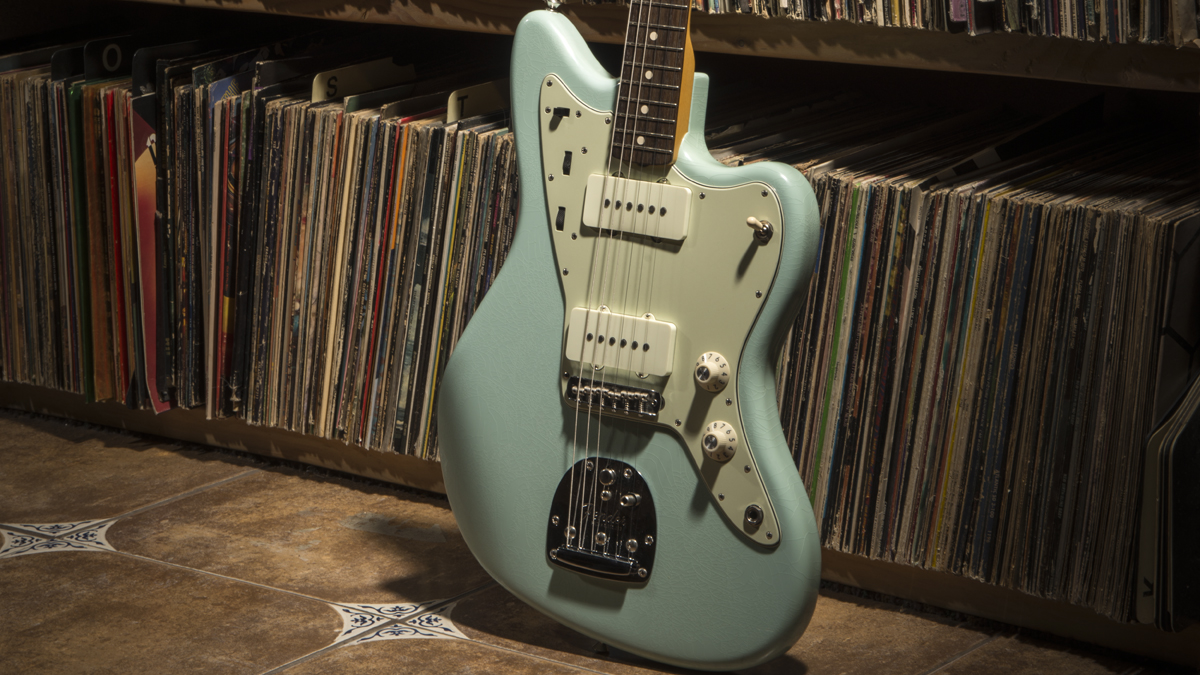
As Fender roared through the mid-1950s, the company made a concerted effort to move its image upmarket while expanding the lineup with new models.
The covers of the 1955 and 1956 catalogs were notably more stylish than those of previous years, but the PR endeavors of Don Randall and the team at Fender Sales improved exponentially before the end of the decade with the help of a creative and keen-eyed young advertising agent.
Meanwhile, in 1956 Fender saw the benefit in adding two new student models to the electric Spanish guitar lineup to lure entry-level players to the brand, while working toward releasing an entirely new, professional-grade model nearer the end of the decade, logging what most would consider the company’s third genuine six-string classic.
The Jazzmaster cometh
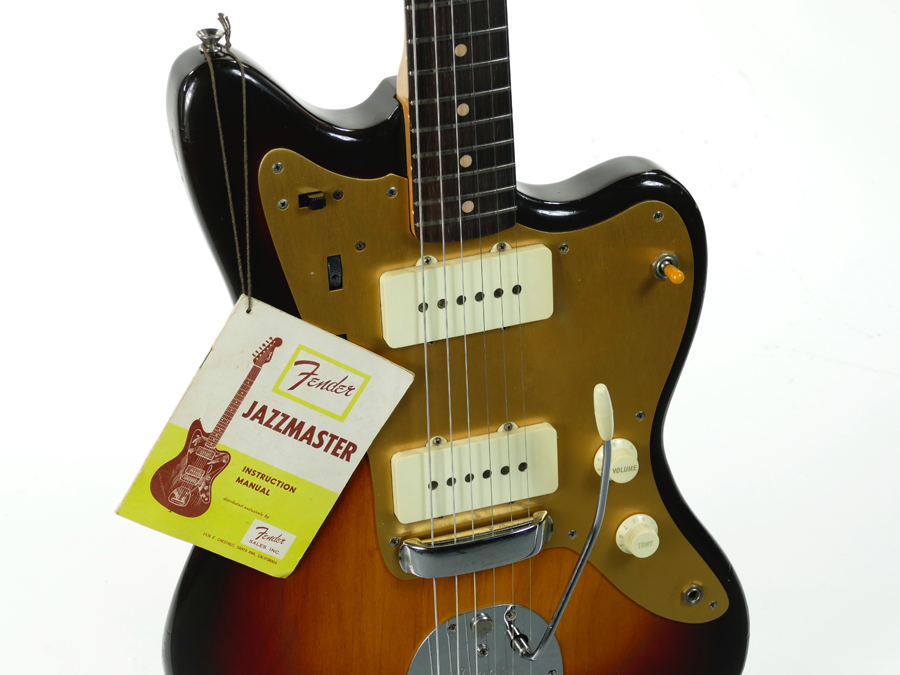
The company expanded down several avenues in the 1950s, starting out primarily serving country artists, but moving confidently into the rock ’n’ roll boom and then the student market. By 1957, Fender was eager to prove that its guitars could have class, too.
Improvements and upgrades had been made to the Telecaster and Stratocaster, and these flagships were landing in the hands of more and more professional players. Jazz players had long been the traditionalists of the electric-guitar world: if the company could win them over, too, it could finally put paid to the derision that had greeted the Broadcaster at the start of the decade and open inroads to thousands of new customers besides.
The result of this effort, the Jazzmaster, became another enduring mainstay in the Fender catalog and a major favorite of several alternative genres for decades to come, though not in the jazz market that Fender had anticipated during the heated R&D process that produced it.
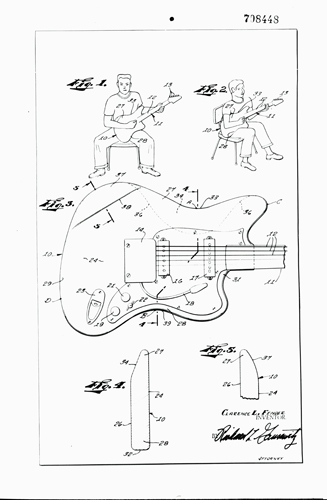
Fender’s spearhead into jazz territory reasoned that the genre’s traditionally minded players could be won over with a few thoughtful changes to the bolt-neck solidbody format. Many of these were touted in a 1958 ad that declared the new model “America’s Finest Electric Guitar.” Chief among the new features were:
Get The Pick Newsletter
All the latest guitar news, interviews, lessons, reviews, deals and more, direct to your inbox!
- Entirely new, wider single-coil pickups intended to produce a warmer, rounder tone
- A new tone circuit that, in addition to a traditional "master" section that governed both pickups, offered a quick preset sound for the neck pickup alone at the flick of a switch (located on the upper horn)
- An offset-waist body design that put the guitarist's right arm in a more comfortable playing position when seated
- A new floating tremolo design partnered with a floating/rocking bridge for extremely smooth vibrato action and improved tuning stability
- A more staid, elegant-looking rosewood fingerboard and traditional sunburst finish
The Jazzmaster displayed considerable design effort and represented an entirely new breed of Fender solidbody, boasting more complex features than any before it. The new model hit the catalog in 1958 as the brand flagship and the most expensive electric Spanish guitar Fender had to offer, retailing at $329 versus $275.50 for a ’58 Stratocaster.
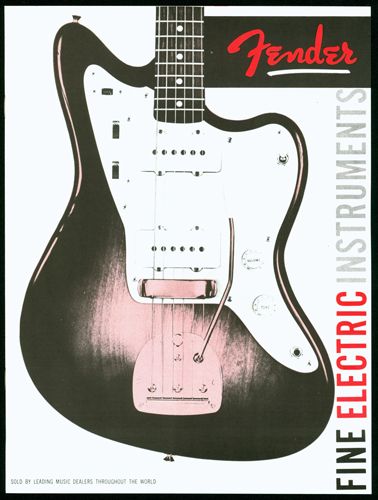
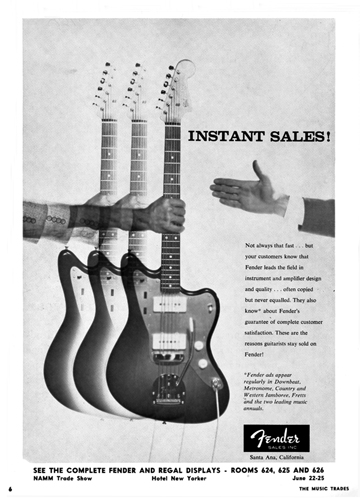
All that, and it failed almost entirely to catch the jazz world on fire. In theory, sure, the new neck pickup’s preset rhythm tone circuit alone might have appeared a more jazz-friendly feature than anything found on another existing solidbody at the time, but aside from that there was little to grab bop, swing, or cool jazz guitarists.
From surf supremo to alternative hero
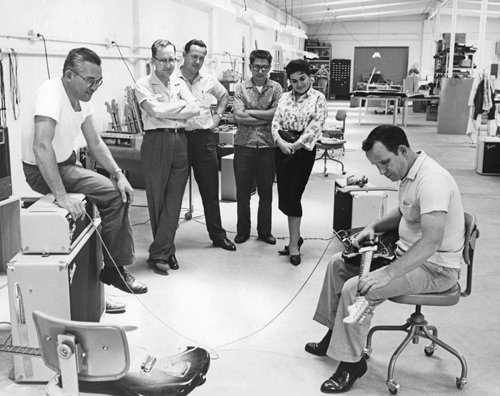
And, on top of it all, the new Jazzmaster looked very gadgety – and arguably very rock ’n’ roll.
However much of a failure the new model might have been from the perspective of the jazz market, it was a near-instant hit with the burgeoning surf-guitar scene that swelled up in California in the late 1950s and was breaking across the country by the early 1960s.
The meaty-yet-twangy sound of the Jazzmaster’s bridge pickup was just right for surf-guitar instrumental lead passages, the neck pickup was great for rhythm, and the smooth vibrato action beautifully suited the obligatory glissandos, dips, and vibratos intended to audibly replicate the roll and tumble of a breaking wave.
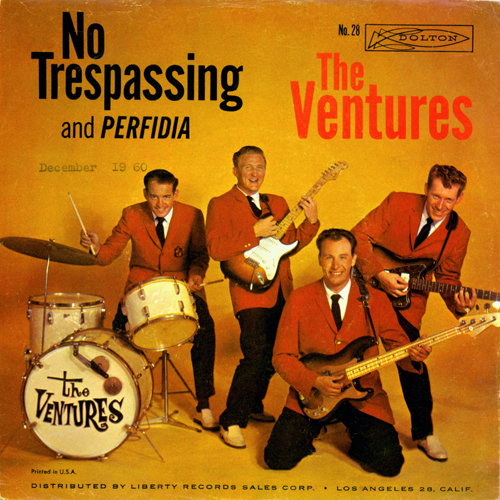
The Ventures, a Seattle band, were among the first prominent artists of the genre to put the Jazzmaster front and center, and soon it was taken up by the Astronauts, the Surfaris, the Tornadoes, and boatloads of others. And the Jazzmaster found an early proponent in Johnny Cash guitarist Luther Perkins, neither jazz nor rock ’n’ roll as such, whose use of Esquires and Telecasters had led to an association with the Fender Company. Perkins happily translated his characteristic boom-chicka-boom-chicka lead-rhythm style to the fancy new model.
Despite some niche-market success, however – and despite being the most expensive new guitar in the Fender catalog – the Jazzmaster’s slow-burn acceptance within other genres meant it was often one of the more affordable full-sized Fender electrics on the used market in coming years.
This applied even more so in the UK, where imported American guitars remained extremely expensive, especially during the faltering economy of the 1970s. If country artists were the working-class heroes of the 1950s and 1960s, punk, new wave, and indie guitarists would take on that mantle in the 1970s, 1980s, and 1990s. And the more-affordable Jazzmaster would often be their weapon of choice.
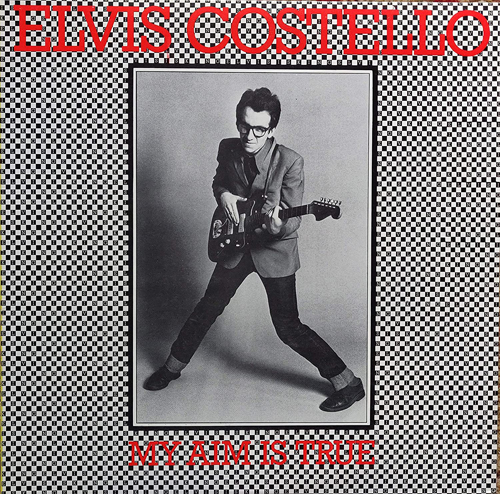
Tom Verlaine of New York band Television laced his ’58 Jazzmaster all over their 1977 debut album, Marquee Moon, about the same time Elvis Costello posed on both front and back covers of his own debut, My Aim Is True, with his stripped Jazzmaster.
Later on, British artists Robert Smith of the Cure, Kevin Shields and Bilinda Butcher of My Bloody Valentine, Robin Guthrie of the Cocteau Twins, and, a little later, Adam Franklin of Swervedriver, Adrian Utley of Portishead, Thom Yorke of Radiohead, and a bundle of others would bend their Jazzmasters to indie and alternative hijinks.
Back in the land of its birth, American noise merchants Thurston Moore and Lee Ranaldo made their Jazzmasters integral to Sonic Youth’s aural assault, while J Mascis of Dinosaur Jr., Ira Kaplan of Yo La Tengo, Wayne Coyne and Steven Drozd of the Flaming Lips, and Jeff Tweedy and Nils Cline of Wilco all embraced the flagship offset.
Rosewood ’boards and Custom Colors
The Jazzmaster’s rosewood fingerboard served as that elegantly rich, dark-brown slice of timber’s introduction to the Fender lineup. Soon the feature proliferated to every model, so that post-1959 the integral maple fingerboard disappeared from standard Fenders until 1967. Meanwhile, with Fender necks heading toward the more traditional, the bodies were soaring toward pop art with the official availability of Custom Color finishes.
Most accounts (including his own) indicate that George Fullerton came up with the idea for standardizing Custom Colors at Fender, an option that took shape more formally around the time of the Jazzmaster’s release. As Fullerton later recalled: "One day, I went down to a local paint store and I started to explain to the man what I had in mind.
"I had him mix some paint there on the spot and finally we came up with a red color... Fiesta Red! I would say probably late 1957/early 1958. The custom colors came out about the time the Jazzmaster just came out. The reason I know that is because I had the color red put over one of the early manufactured Jazzmasters."
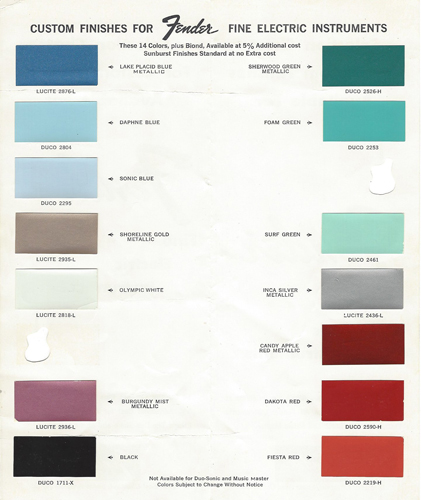
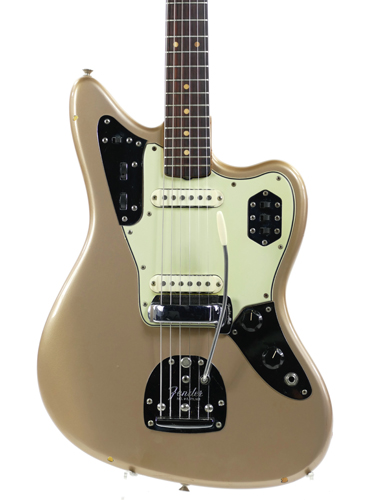
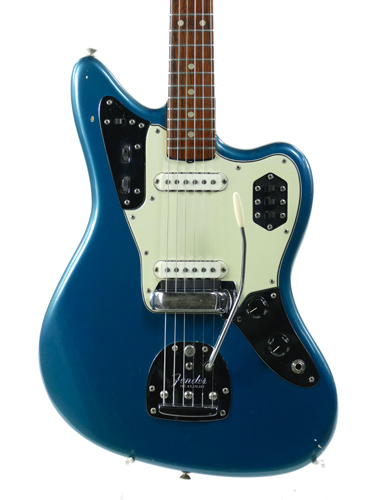
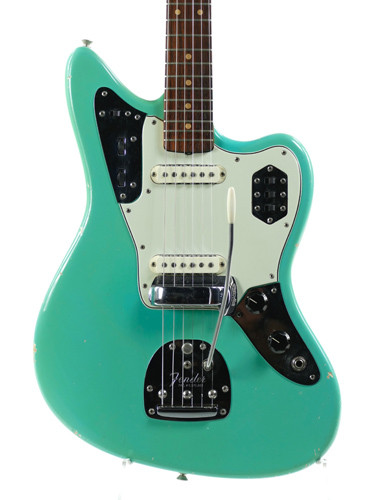
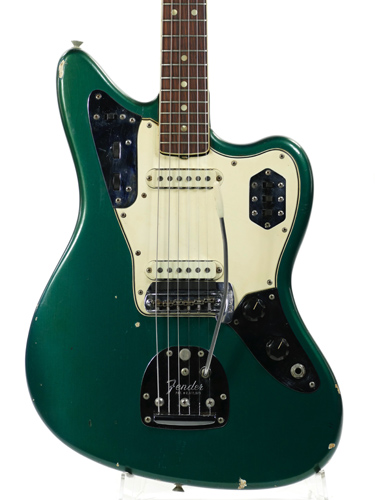

In fact, the first public mention of the availability of any alternatives to the standard Blonde Telecaster and Sunburst Stratocaster came in a note at the bottom of a 1956 sales sheet, which read, “Stratocaster guitars are available in Du-Pont Ducco colors of the player’s choice at an additional 5% cost.”
Prior to that, some artists had requested special colors, resulting in Bill Carson’s Cimarron Red and Eldon Shamblin’s gold Stratocasters. Custom paint options had proved big sellers in the car industry in recent years, and it made sense to offer the same on electric guitars, especially as rock ’n’ roll and the youth market in general were becoming bigger consumers of the solidbodies.
Paint codes from Fender’s Custom Color chart, issued in 1960 and offering fifteen official colors (including Blonde) in addition to the standard Sunburst, reveal their doppelgangers from the auto industry, doubling colors found on Ford’s Comet, Mercury, and Lincoln models, and on GM’s Chevrolet, Buick, Oldsmobile, and Cadillac models.
Custom Colors became more prevalent from 1960 onward, dressing up Stratocasters and Jazzmasters most often, but occasionally daubing Telecasters and Esquires,too, as well as another top-of-the-line model that was in the works for 1962.
- Fender: 75 Years by Dave Hunter (Motorbooks, $50 US, £35 UK) will be published on September 21.
“What blew me away was that everyone wanted the curly maple top. People were calling, saying, ‘I’ve got to have the bird inlays’”: Paul Reed Smith on raising the Standard 24, finally cracking the noise-free guitar and why John Sykes is a tone hero
“It combines unique aesthetics with modern playability and impressive tone, creating a Firebird unlike any I’ve had the pleasure of playing before”: Gibson Firebird Platypus review


![[from left] George Harrison with his Gretsch Country Gentleman, Norman Harris of Norman's Rare Guitars holds a gold-top Les Paul, John Fogerty with his legendary 1969 Rickenbacker](https://cdn.mos.cms.futurecdn.net/TuH3nuhn9etqjdn5sy4ntW.jpg)







